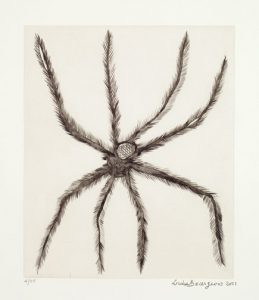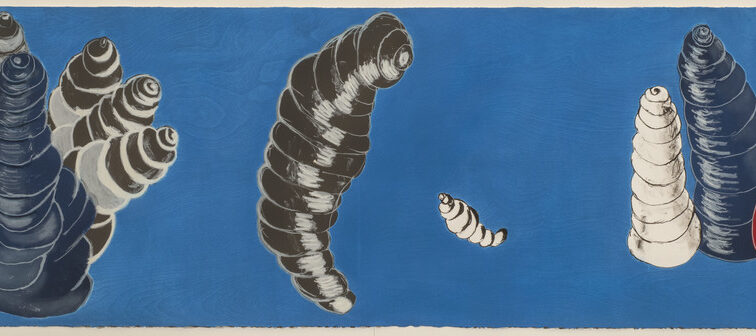The exhibition catalogue Louise Bourgeois. Structures of Existence: The Cells (Prestel Publishing and Haus der Kunst, 2015) showcases the artist’s work creating Cells, a series of architectural sculptures that she worked on for twenty years, from 1986 through 2008.
These embody the belief of Bourgeois (1911 to 2010) that “space does not exist, it is just a metaphor for the structure of our existences.” The Cells are enclosures or cage forms, often incorporating mirrors, dummy-like figures, or staircases leading nowhere, nuanced and provocative spatial metaphors for her own personal history. The book compiles essays and conversations revealing Bourgeois’s influences and the way that her childhood experiences, coupled with recondite concepts from her early works, form the Cells series.

The book’s sections provide a comprehensive perspective on how Bourgeois’s life and memories influenced the Cells. Texts include conversations with Bourgeois’s long-time assistant Jerry Gorovoy, essays by renowned scholars, a short biography, and selected statements and quotations from the artist herself.
Several essays focus on a single Cell, such as the elaborate and cage-like Passage Dangereux (1997), and explain how the piece relates to Bourgeois’s oeuvre and biography.
Other contributors focus on the abstract meanings behind the emotion-laden sculptural constructions. These complex emotions are rooted in Bourgeois’s difficult childhood, her aggression toward her philandering father, and the constant tension between her desires to remember the past and to forget it. Gorovoy states, “The Cells tell stories and are definitely autobiographical, but the emotions are universal.”
Exhibition connection:

Currently on view at NMWA in Super Natural, Louise Bourgeois’s drypoint print Hairy Spider depicts a spider, a common motif in the artist’s work.
Bourgeois associated spiders with patience, and she often likened them to her mother, whom she saw as patient to a fault when it came to handling her father’s adultery with her live-in nanny.
To capture her mother’s presence in painful memories from her childhood, Bourgeois included spiders in some of the Cells featured in the exhibition catalogue, the book reveals that Bourgeois often felt frustrated that her patient mother calmly tolerated this infidelity. The drypoint in Super Natural connects back to Bourgeois’s oft-revisited themes of spiders, patience, and motherhood.
